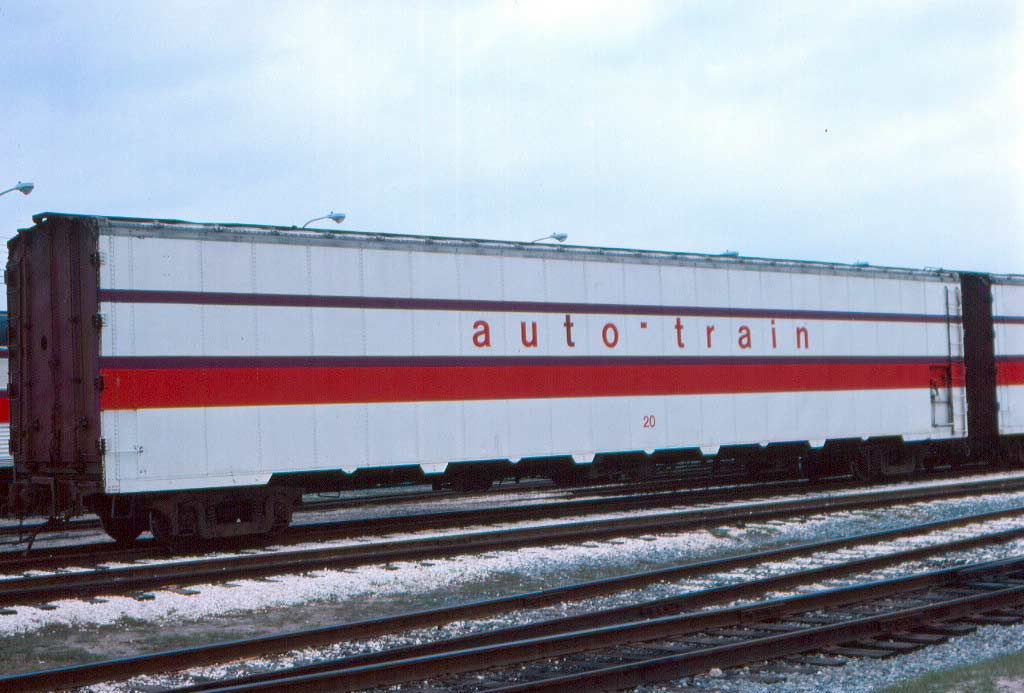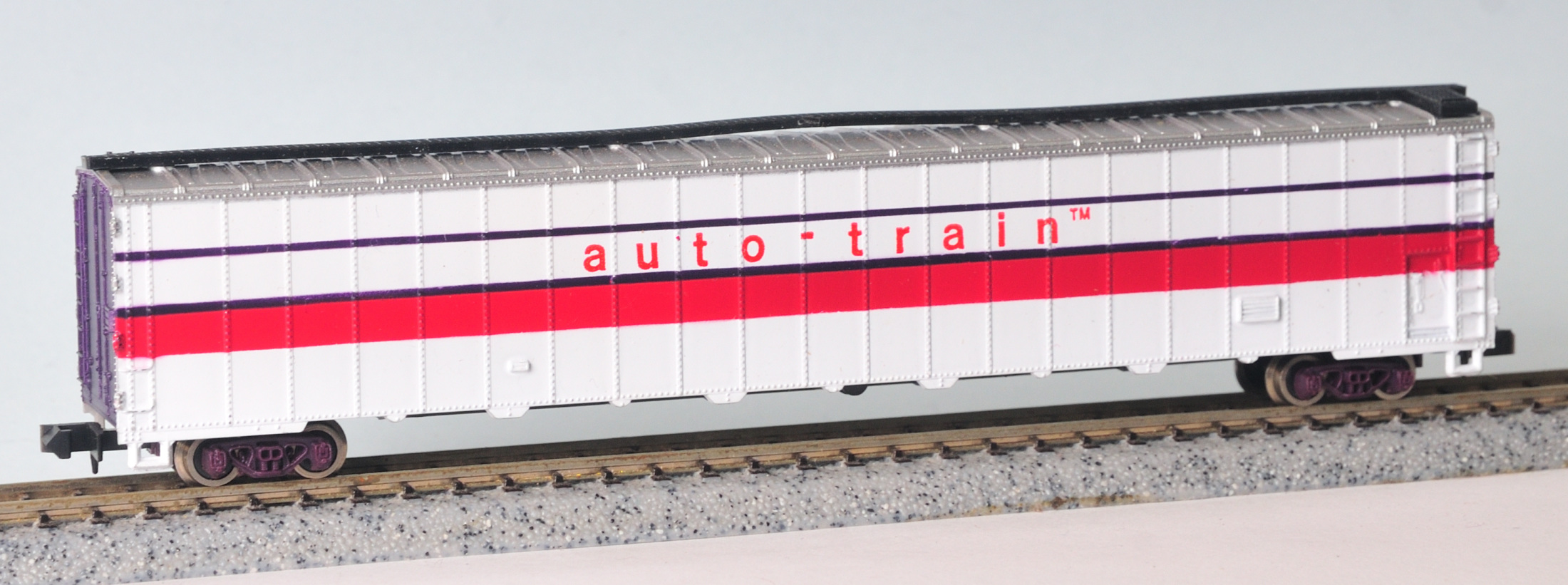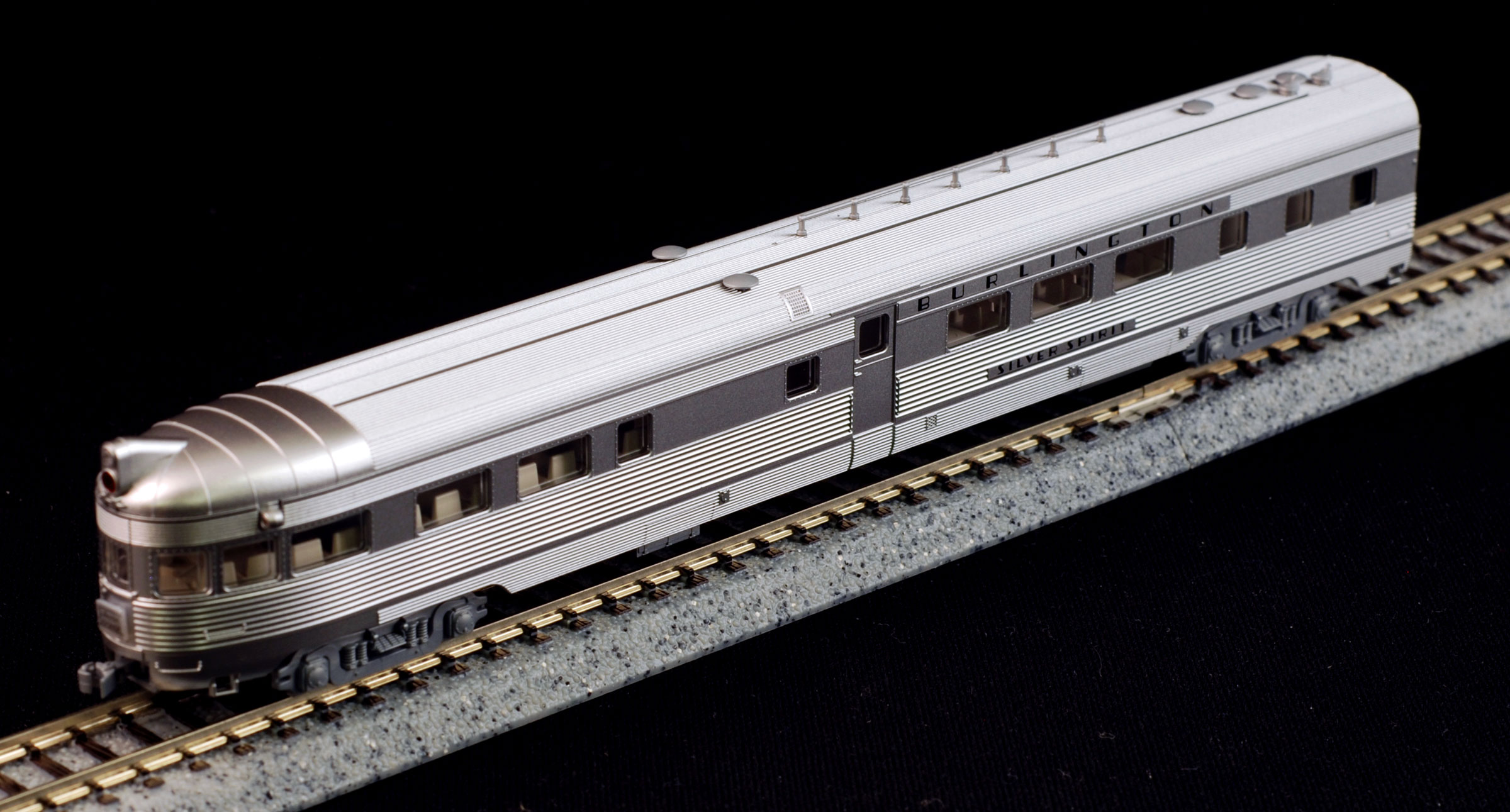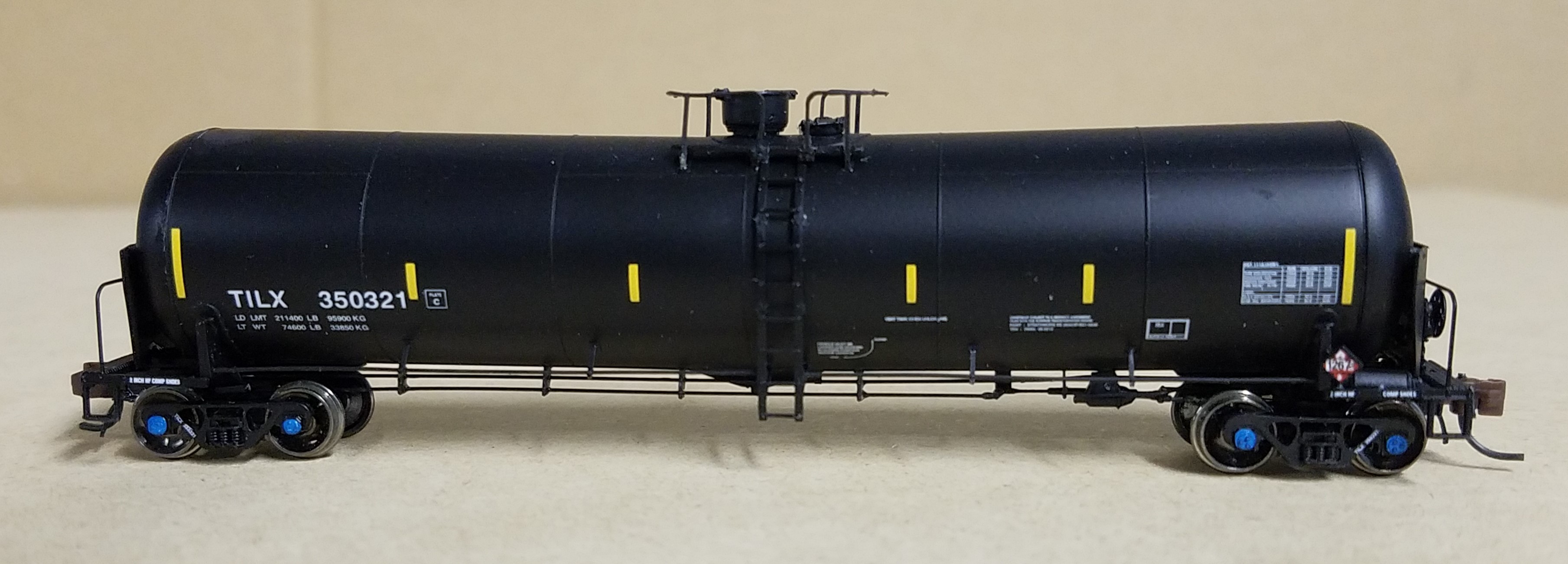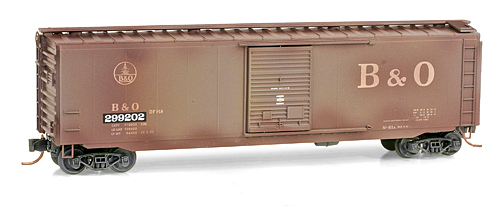History: The Autorack (or "Auto Carrier") is a piece of railroad rolling stock built for a specific purpose - to transport cars. Commonly used to transport cars from the manufacturer to larger automotive distributors (before they're loaded onto the semis that are commonly seen on highways), they are also used on services such as Amtrak's Auto Train - a special train which operates between Lorton, VA and Sanford, FL in which passengers can load their cars aboard any one of the 20-30 trailing autorack cars and enjoy a luxurious ride down the United States' east coast, the end of which they can take their car with them for the continuation of their journey.
The double-deck autoracks used by the original Auto Train were acquired from Canadian National in 1971. The autoracks were designed and built in the 1950s by CN. They were the first of their kind. The CN bi-level autorack cars had end-doors. They were huge by the standards of the time; each 75-footer (23.86 m) could carry 8 vehicles. Ramps at the terminals loaded cars through the end doors. Most of these carriers were later sold to Amtrak for use in their auto train when the auto-train corporation went bankrupt in 1981.
The double-deck autoracks used by the original Auto Train were acquired from Canadian National in 1971. The autoracks were designed and built in the 1950s by CN. They were the first of their kind. The CN bi-level autorack cars had end-doors. They were huge by the standards of the time; each 75-footer (23.86 m) could carry 8 vehicles. Ramps at the terminals loaded cars through the end doors. Most of these carriers were later sold to Amtrak for use in their auto train when the auto-train corporation went bankrupt in 1981.
Railroad/Company: The Canadian National Railway Company (reporting mark CN) is a Canadian Class I railway headquartered in Montreal, Quebec that serves Canada and the Midwestern and Southern United States. CN's slogan is "North America's Railroad". CN is a public company with 24,000 employees. It had a market capitalization of 32 billion CAD in 2011. CN was government-owned, having been a Canadian Crown corporation from its founding to its privatization in 1995. Bill Gates was, in 2011, the largest single shareholder of CN stock.
CN is the largest railway in Canada, in terms of both revenue and the physical size of its rail network, and is currently Canada's only transcontinental railway company, spanning Canada from the Atlantic coast in Nova Scotia to the Pacific coast in British Columbia. Its range once reached across the island of Newfoundland until 1988, when the Newfoundland Railway was abandoned.
Following CN's purchase of Illinois Central (IC) and a number of smaller US railways, it also has extensive trackage in the central United States along the Mississippi River valley from the Great Lakes to the Gulf of Mexico. Today, CN owns about 20,400 route miles (32,831 km) of track in 8 provinces (the only two not served by CN are Newfoundland & Labrador and Prince Edward Island), as well as a 70-mile (113 km) stretch of track (see Mackenzie Northern Railway) into the Northwest Territories to Hay River on the southern shore of Great Slave Lake; it is the northernmost rail line anywhere within the North American Rail Network, as far north as Anchorage, Alaska (although the Alaska Railroad goes further north than this, it is isolated from the rest of the rail network).
The railway was referred to as the Canadian National Railways (CNR) between 1918 and 1960, and as Canadian National/Canadien National (CN) from 1960 to the present.
Read more on Wikipedia.
CN is the largest railway in Canada, in terms of both revenue and the physical size of its rail network, and is currently Canada's only transcontinental railway company, spanning Canada from the Atlantic coast in Nova Scotia to the Pacific coast in British Columbia. Its range once reached across the island of Newfoundland until 1988, when the Newfoundland Railway was abandoned.
Following CN's purchase of Illinois Central (IC) and a number of smaller US railways, it also has extensive trackage in the central United States along the Mississippi River valley from the Great Lakes to the Gulf of Mexico. Today, CN owns about 20,400 route miles (32,831 km) of track in 8 provinces (the only two not served by CN are Newfoundland & Labrador and Prince Edward Island), as well as a 70-mile (113 km) stretch of track (see Mackenzie Northern Railway) into the Northwest Territories to Hay River on the southern shore of Great Slave Lake; it is the northernmost rail line anywhere within the North American Rail Network, as far north as Anchorage, Alaska (although the Alaska Railroad goes further north than this, it is isolated from the rest of the rail network).
The railway was referred to as the Canadian National Railways (CNR) between 1918 and 1960, and as Canadian National/Canadien National (CN) from 1960 to the present.
Read more on Wikipedia.
Item Links: We found: 1 different collections associated with Rail - Rolling Stock (Freight) - Auto Train
- Collection N Scale Model Trains: 1 different items.
Item created by: gdm on 2018-02-19 09:15:06. Last edited by gdm on 2018-02-19 09:23:39
If you see errors or missing data in this entry, please feel free to log in and edit it. Anyone with a Gmail account can log in instantly.
If you see errors or missing data in this entry, please feel free to log in and edit it. Anyone with a Gmail account can log in instantly.


